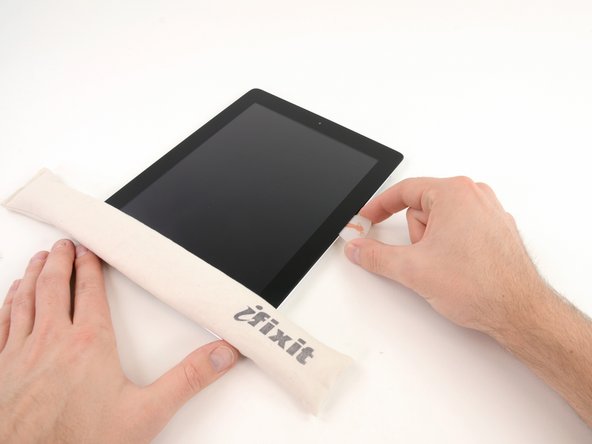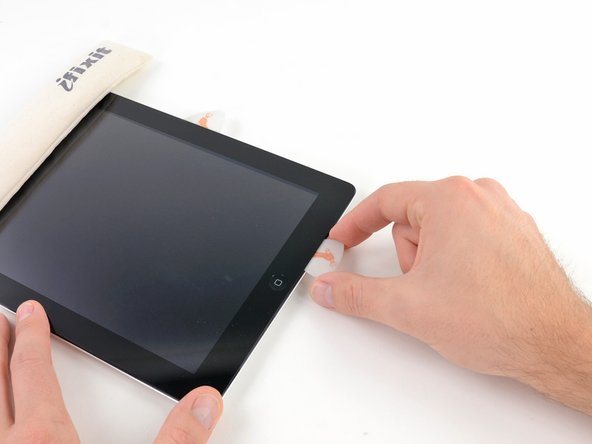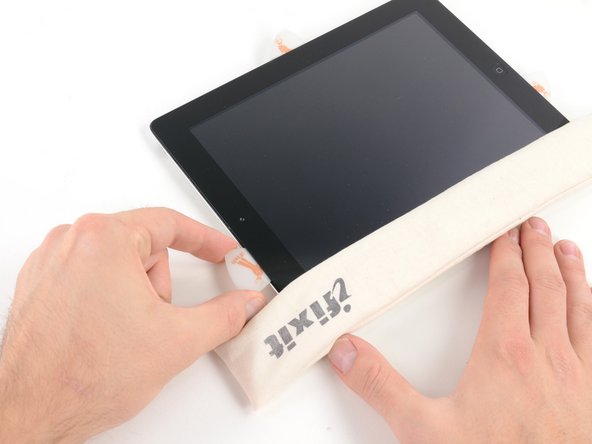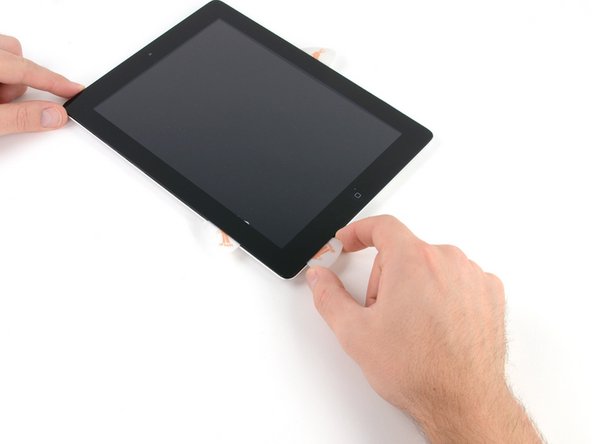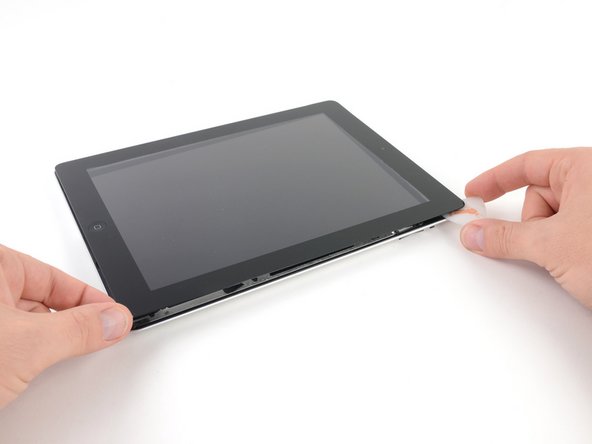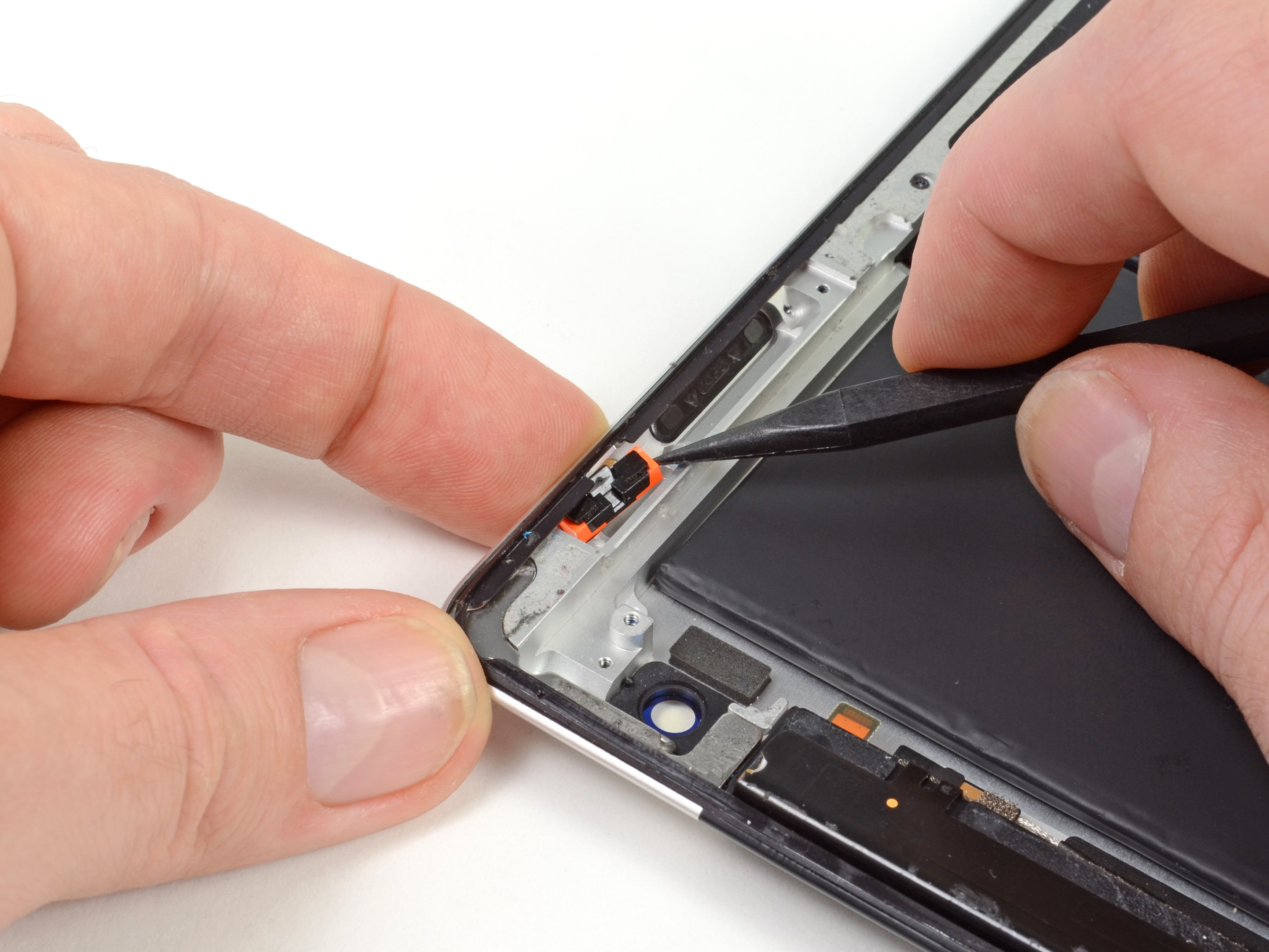iPad 3 4G Logic Board Replacement
Duration: 45 minutes
Steps: 45 Steps
Ready to swap out that logic board? It's easier than you think! Just follow these steps carefully and soon you'll have your device running like new. Remember to take your time and stay organized. If things get tricky, don't hesitate to schedule a repair. We've got you covered!
Step 1
For carousel microwaves: Double-check that the plate spins without any hiccups. If your iOpener gets stuck, it might overheat and cause a burn, so keep it moving!
Before you get started, take a moment to give your microwave a quick clean-up. You don’t want any unwanted grime sticking to the iOpener and causing a mess down the line.
- Put the iOpener right in the middle of the microwave.
Tools Used
Step 2
Don't overheat your iOpener during the repair. Too much heat could cause it to burst, and we definitely don’t want that! Keep it under 100˚C (212˚F).
If your iOpener starts to look a bit swollen, don’t touch it. Safety first!
If the iOpener is still too hot in the middle, give it some time to cool down before you reheat it. A well-heated iOpener can stay warm for up to 10 minutes, so take it slow and steady!
Microwave wattage varies, so adjust heating time accordingly. The iOpener is ready when it’s just a tad too hot to handle comfortably.
- Give that iOpener a cozy thirty seconds in the microwave to warm it up.
- As you work through your repair, keep an eye on the iOpener. If it starts to cool down, just pop it back in the microwave for another thirty seconds to keep the good vibes going!
Tools Used
Step 3
Careful there! The iOpener is going to be quite toasty, so handle it with caution. A trusty oven mitt might come in handy!
- Carefully take the iOpener out of the microwave by grabbing one of the two flat ends—steer clear of the hot middle to keep those fingers happy.
Tools Used
Step 4
Caution: The iOpener is going to be pretty toasty! Make sure to grab it only by those handy end tabs.
No microwave? No problem! Just pop your iOpener into a pot of boiling water to heat it up.
- Grab a pot or pan and fill it with enough water to fully submerge your iOpener.
- Bring the water to a boil, then turn off the heat. Let’s keep things cozy and safe!
- Drop the iOpener into the hot water and let it soak for 2-3 minutes. Make sure it's completely submerged.
- Use tongs to carefully pull out the iOpener from the hot water. Watch out, it’s toasty!
- Give the iOpener a good dry with a towel. Make sure it’s not dripping before use.
- You're all set! If you need to heat it up again, just boil more water, turn off the heat, and let the iOpener soak for another 2-3 minutes.
Tools Used
Step 5
Pop on some safety glasses to keep your eyes safe, and handle that LCD screen with care—it’s delicate!
This helps keep those sneaky glass shards from flying everywhere and gives the display some solid support while you carefully pry it open.
- If your display glass is cracked, keep those shards in check and avoid any ouch moments by taping over the glass before you start.
- Cover the entire iPad screen with overlapping strips of clear packing tape until it's fully wrapped.
- Try to follow the rest of the guide as usual, but heads up: once the glass is broken, it might keep cracking as you go. You might need to carefully use a metal prying tool to lift out the glass pieces.
Step 6
Heads up! Since you’ll likely be handling some broken glass during this step, it’s a smart move to rock some safety glasses to keep those sneaky shards out of your eyes.
- Position the iOpener flat against the right edge of your iPad, ensuring it's nice and cozy for optimal contact with the iPad's surface.
- Give it about 90 seconds to work its magic before you dive in and start prying open that front panel.
Tools Used
Step 7
Getting the tip of the opening tool wedged between the glass and plastic might take a bit of elbow grease. Take your time and gently wiggle the tool back and forth until it slides in smoothly.
- There's a tiny gap in the iPad's adhesive ring up near the upper right corner, about 2 inches (~5 cm) down from the top. This little space is your friend for this next step.
- Now, line up your tool with the mute button. Gently slide the tip of a plastic opening tool into that gap between the front glass and the plastic bezel. Just slide in the very tip to slightly widen the crack. You got this!
Step 8
- Be sure to tuck that tool right where it belongs—between the plastic display bezel and the front panel glass. You've got this!
Step 9
- With the plastic opening tool nestled snugly between the front glass and plastic bezel, gently slide a plastic opening pick into that little gap, right beside the tool. You're doing great—keep it going!
Step 10
- Take that nifty plastic opening tool and gently slide it under the iPad's front glass, pushing it in about half an inch. You're doing great!
Step 11
- As you tackle the challenge of loosening the adhesive on the right side of the iPad, don’t forget to give your iOpener a little reheat love, and then pop it back onto the bottom edge of the iPad.
Tools Used
Step 12
The adhesive is super strong, and you might need to put in some serious elbow grease. Just take your time and be careful!
If you spot the tip of the opening pick sneaking out from under the front glass, gently pull it back just a bit. Going this deep with the pick won’t cause any damage, but it might leave some sticky adhesive smudges on the LCD.
- While the iOpener works its magic on the bottom edge, start peeling back the adhesive from the right side of the iPad.
- Gently slide the opening pick along the edge of the iPad, letting it release the adhesive as you go. Nice and steady!
Tools Used
Step 13
You might need to slide the heated iOpener back onto the right edge of the iPad as you peel off the adhesive. This depends on how much time the iPad had to cool down while you were busy working on other things.
- If your opening pick gets stuck in the adhesive, just gently 'roll' it along the edge of the iPad to keep loosening that sticky stuff.
Tools Used
Step 14
- Before you pull out that first opening pick from the bottom corner of the iPad, slide a second pick under the right edge of the front glass to keep that sticky adhesive from sneaking back together.
- Heat up the iOpener again, then shift it over to the top edge of the iPad to keep things nice and warm.
Tools Used
Step 15
The Wi-Fi antenna is snugly attached to the bottom right corner of the rear case with screws and a cable. Because of the way it's positioned, take extra care when handling it – one wrong move and you might damage the antenna beyond repair. Go slow and steady!
- Heads up: the upcoming steps call for extra care and a steady hand.
- You’ll need to carefully loosen the adhesive holding the antenna to the front panel without messing up the fragile connections attaching the antenna to the bottom of the iPad. Take it slow and follow along closely.
Step 16
Keep the pick from sliding past the bottom right corner—going further might mess up the Wi-Fi antenna, and we don’t want that!
- Gently maneuver the opening pick around the bottom right corner of the iPad to break free the adhesive that's holding it down.
Step 17
Hey there! Just a quick heads up: as you glide that opening pick along the bottom right edge of the front panel, be super careful! The Wi-Fi antenna is lurking close to the corner, and if the adhesive gets a little too wild, it could end up damaged. Let's keep that antenna safe, shall we?
Just a little tip: when you’re working under that front glass, keep the pick in play! Pull it out just a smidge so that about 1/8" (3 mm) of the tip stays cozy under there. It’s like a little magic trick for your device!
- Gently slide the tip of your opening pick along the bottom edge of the iPad to carefully loosen the adhesive holding down the Wi-Fi antenna.
Step 18
- Once you've made it past the Wi-Fi antenna (that's about 3 inches from the right edge, right by the home button), pop that opening pick in all the way.
- Now, slide the pick to the right to free the adhesive that's holding the Wi-Fi antenna to the front glass.
- Just a heads up: the antenna is secured to the bottom of the iPad with screws and a cable. This step ensures that when you lift off the front panel, the antenna stays safe and sound.
Step 19
Keep the iOpener's heating time to just a minute at a time, and give it a breather for at least two minutes before you heat it up again. Safety first, and let's keep things chill!
If the adhesive has gotten a bit too chilly along the bottom edge, give that iOpener another warm-up to get the adhesive nice and toasty where you're working.
- Keep peeling away the adhesive at the bottom of your iPad, gently pulling the opening pick out far enough to circle around the home button. Once you've passed the button, slide that pick back in to about 1/2 inch (10 mm) deep. You've got this!
Tools Used
Step 20
For iPad 4 models, carefully slide the pick in this area up to 1/2 inch (10 mm) deep. Let's keep that home button ribbon cable safe and sound, shall we?
- Keep peeling away that sticky adhesive along the bottom edge of your iPad like a champ!
- Once you've got a nice little gap, tuck that opening pick under the front glass near the home button and let it rest there.
Step 21
- Pop the iOpener back in the microwave for a bit, then place it on the left edge of the iPad to gently heat up the adhesive there.
Tools Used
Step 22
If the adhesive has gotten a bit too chill, just swap in a fresh iOpener along the top edge and keep on rolling. If your iOpener is feeling a bit too cool, give it another heat-up and get back to work!
- Gently glide the opening pick along the top edge of your iPad, giving it a little pull to navigate around that front-facing camera bracket.
- This section's adhesive is pretty hefty, so you might need to put in a bit of muscle. Take your time and be careful—no need to rush and risk a mishap with your iPad.
- If the pick starts to feel like it's stuck in the adhesive, try 'rolling' it as illustrated in step 9. You've got this!
Tools Used
Step 23
If the adhesive feels warm enough, go ahead and set the iOpener aside for a bit of convenience. But if it’s still holding on tight, just heat the iOpener up again and keep it resting on the left edge while you work your magic.
- Keep peeling away that sticky stuff along the top edge of the iPad, and gently maneuver the opening pick around the top left corner like a pro.
Tools Used
Step 24
The digitizer cable is hanging out about 2" (50 mm) up from the bottom of your iPad. When your pick hits around 2.25" (60 mm) from the bottom, it’s time to pause and take a breather!
- Gently slide the opening pick along the left edge of the iPad to loosen the adhesive. Heads up: the adhesive is pretty thin here because of the digitizer running along the whole left side. Keep the pick shallow—no more than about half an inch (10 mm)—to avoid messing with the digitizer.
Step 25
Be super careful here! The bottom of the digitizer cable is just about an inch (25 mm) from the iPad's edge. Take your time and watch out for that cable—let's keep it intact!
- With the trusty opening pick still hanging out beneath the bottom edge of your iPad, gently release that stubborn adhesive hiding out in the bottom left corner. You've got this!
Step 26
Sometimes the adhesive around the iPad's edge likes to play sticky again. If that happens, gently slide a pick under the part of the front glass that's still holding on and carefully 'cut' through the adhesive to free it up.
- With one of those handy opening picks, gently lift the bottom right corner of the iPad and give it a little tug with your fingers.
Step 27
Watch out for any sticky adhesive still hanging on, and gently slide an opening pick to slice through any glue keeping the front panel in place.
- Grab your iPad by the top and bottom right corners, and give that front glass a gentle twist away from the device. You've got this!
- As you put everything back together, take a moment to pamper your LCD! Use a microfiber cloth and some compressed air to whisk away any pesky dust or fingerprints before sealing it up with the glass.
Step 28
- Unscrew those four tiny 2 mm Phillips #00 screws that are holding the LCD to the aluminum frame. You've got this!
Step 29
Handle the LCD with care! That ribbon cable is delicate and could snap if you bend it too much.
- Grab a plastic opening tool or a spudger and gently pry up the right edge of the iPad's LCD.
- Carefully swing the LCD open like a door on its left side and rest it on top of the front panel.
Tools Used
Step 30
- Carefully use the tip of your spudger to lift and peel back the tape that’s hiding the LCD ribbon cable connector.
Tools Used
Step 31
- Lift the retaining flap on the LCD ribbon cable ZIF connector like you're opening a tiny treasure chest.
- With a gentle tug using your fingers or tweezers, carefully pull the LCD ribbon cable from its snug home on the logic board.
- If your iPad is playing hard to get and the LCD screen refuses to light up after reconnecting the ZIF connector, don't panic! Just hold down the power button and home button together for at least ten seconds until the Apple logo makes its grand entrance.
Step 32
- Carefully lift the LCD away from the front panel, but keep your hands off the front of the screen to avoid any smudges or damage.
Step 33
- With the sharp edge of your trusty spudger, gently lift the tape that's keeping the touchscreen ribbon cable snug against the logic board. You're doing great!
Tools Used
Step 34
- Gently lift the little flap on both touchscreen ribbon cable ZIF connectors to unlock them.
Step 35
- Gently wedge the flat end of a spudger under the digitizer ribbon cable to break up the sticky adhesive holding it down.
- Carefully pull the digitizer ribbon cable straight out from its connectors on the logic board.
Tools Used
Step 36
- Gently peel back the touchscreen ribbon cable, then use the flat end of a spudger to carefully loosen the adhesive holding the cable to the rear aluminum case.
Tools Used
Step 37
- With a gentle tug, use your fingers to slide the touchscreen ribbon cable out of its snug spot in the aluminum frame.
- Carefully lift away the front panel from the iPad, like peeling a banana – but without the mess!
Step 38
If you spot any electrical tape hiding the Wi-Fi antenna, speaker cable, or dock connector cable, go ahead and peel it off gently.
Step 39
- Gently peel back and take off the electrical tape that’s hiding the headphone jack assembly cable connector.
- Grab your trusty spudger and carefully flip up the little retaining flaps on both ZIF connectors that hold the headphone jack cable onto the logic board.
Tools Used
Step 40
- Gently slide the flat end of your spudger under the headphone jack assembly cable to break free the adhesive holding it to the rear aluminum frame.
- Carefully pull the headphone jack assembly cable straight out from its socket on the logic board.
Tools Used
Step 41
- Gently peel back and take off the tape that’s covering the SIM board cable ZIF connector.
- Flip up the little retaining flap on the SIM board cable ZIF connector—it’s like opening a tiny door.
- Carefully use the tip of a spudger to pull the SIM board cable straight out from its socket on the logic board.
Tools Used
Step 42
Remember to gently pry beneath the connector, not the socket itself! Giving the socket a poke might lead to some serious damage, and we definitely want to avoid that. You've got this!
- Gently unplug these connectors from their spots on the logic board:
- Wi-Fi antenna cable
- Speaker connector cable.
- Dock connector cable.
Step 43
Heads up! One of these screws hiding at the top of the logic board is sneaky—it's tucked right under the headphone jack assembly cable. Gently hold the cable aside while you remove and replace this little rascal.
- Time to get your toolkit ready! First, let's tackle those seven screws holding the logic board snugly against the rear aluminum panel.
- You'll need six 2.1mm Phillips #00 screws and one 2.5mm Phillips #00 screw for this step.
Step 44
- With the logic board in hand, grab the side closest to the dock connector and gently slide the logic board down toward the bottom of the iPad.
Step 45
- To put your device back together, just run through these steps backwards. Easy peasy! And if you hit a snag, don’t hesitate to schedule a repair with us.
























